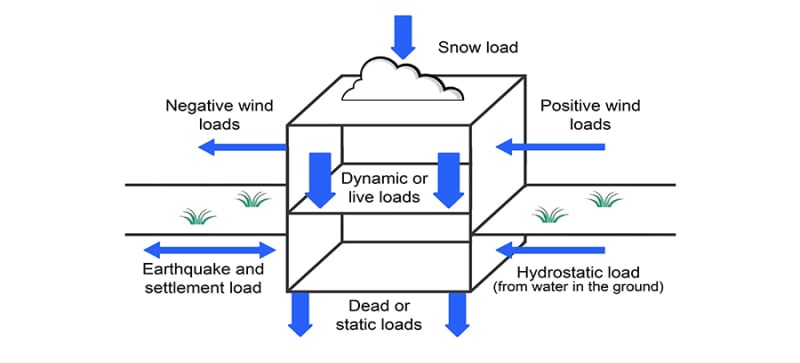
Understanding design calculations for facades
- Read time: 4 minutes
- Date: 09 Aug 2022
- Rainscreen & Façades
Design calculations are used to assess the loads or forces that will be placed on a building’s façade during its lifetime. If these calculations are not done, the façade support structure or individual components such as fasteners may fail because they cannot withstand the forces placed upon them. Equally, without conducting the necessary calculations, it is possible to over specify resulting in additional costs to the contractor or client.
What are some of the common calculations undertaken for façades?
Common façade calculations include:
Substrate and wind load calculations to British Standard BS EN 1991-1-4:2005 + Amendment 1:2010 of the Eurocode series and the European standard. These calculations ensure the façade support system can withstand the wind load and fasteners will not pull out of the substrate.
3D U-value calculations to BS EN ISO 10211, which are the most accurate way to ensure the build-up meets the required thermal performance without thermal bridging.
Fire rating tests to determine the combustibility of the individual components or products and the build-up. Building regulations in England and Wales ban the use of combustible materials in the external walls of some buildings over 18m. In Scotland, the use of combustible materials are banned in the external walls on most buildings over 11m.
On-site pull tests to confirm the structural suitability of your chosen system with the available substrate.
What are the loads that are placed on a building’s structure?
The loads placed onto a building can broadly be divided into vertical loads (e.g. dead loads, live loads and impact loads), and horizontal loads (e.g. some environmental loads).
Environmental loads are similar to dynamic loads in that they vary over time, but they are caused by the weather or topographic events. They include loads caused by wind, snow, earthquake, settlement (where one part of a structure settles more than another) and thermal (the expansion and contraction of materials due to temperature).

What information is needed to conduct façade calculations to determine the correct façade support system?
Façade calculations are undertaken by structural engineers or your façade support system manufacturer’s technical support team. To do these calculations, specific information is needed about the project including:
The location to determine the wind loads and other environmental factors
Building plans, elevations and area for the rainscreen
Substrate material and thickness
The chosen face panels
The chosen insulation
The preferred bar profile for the substructure
Façade calculations are then used to configure the correct façade support system for the project.





